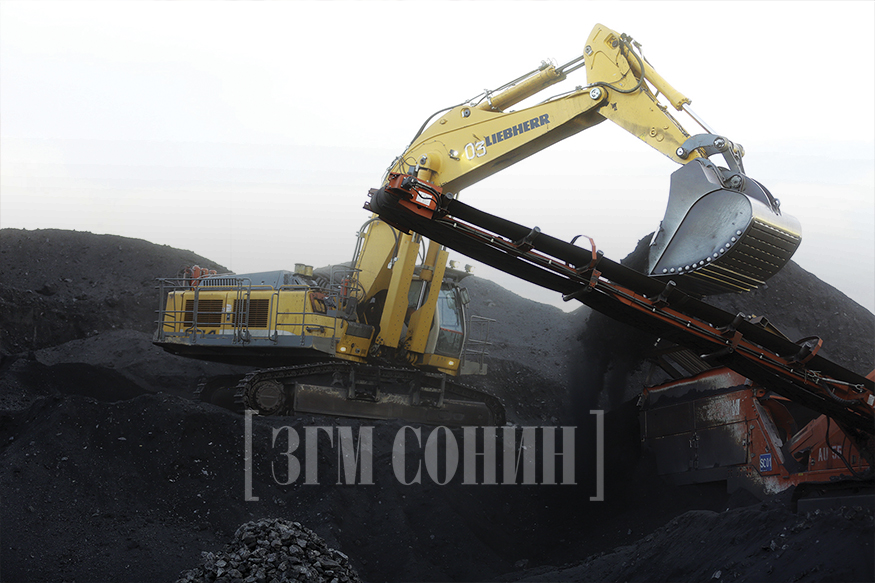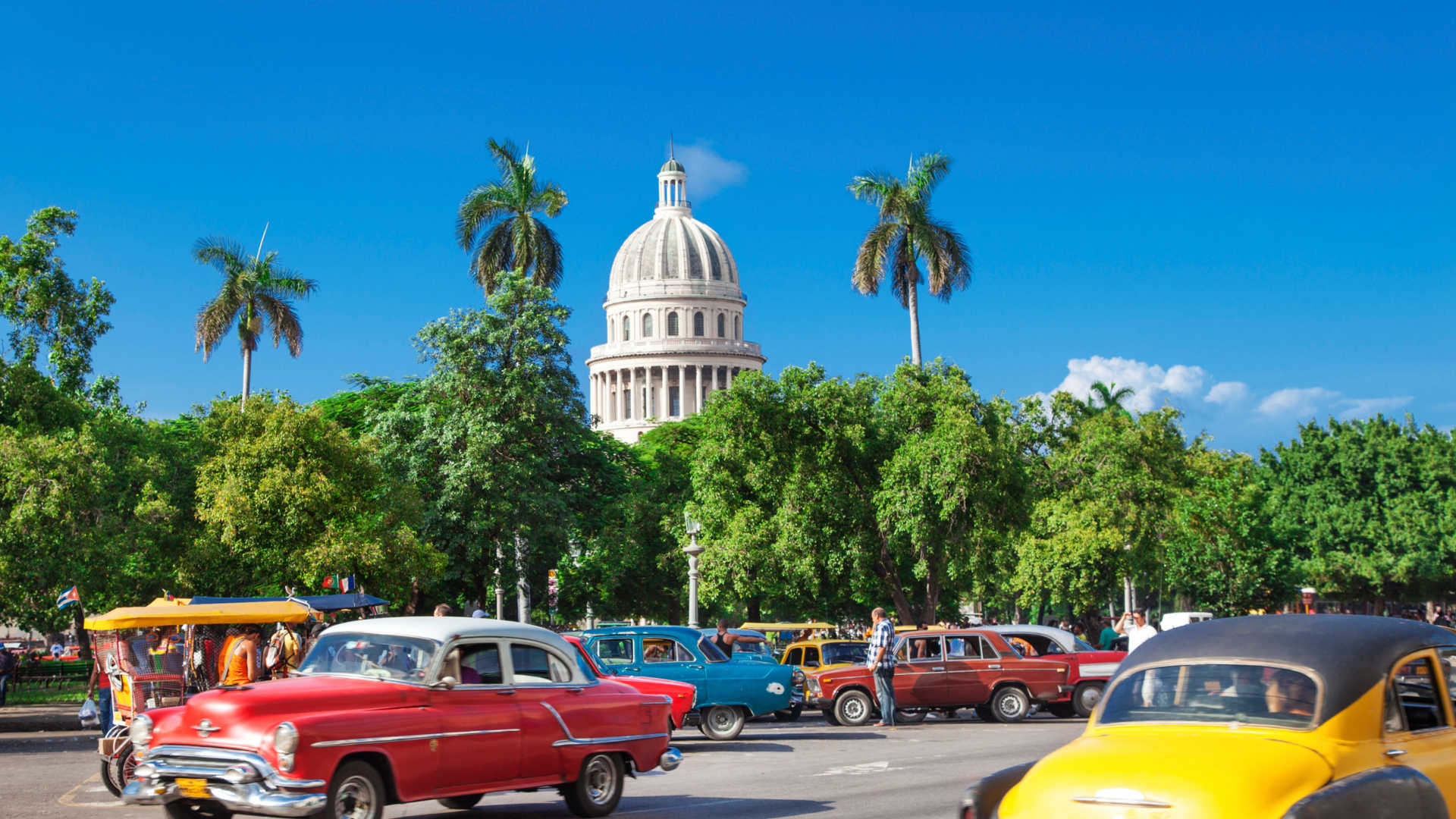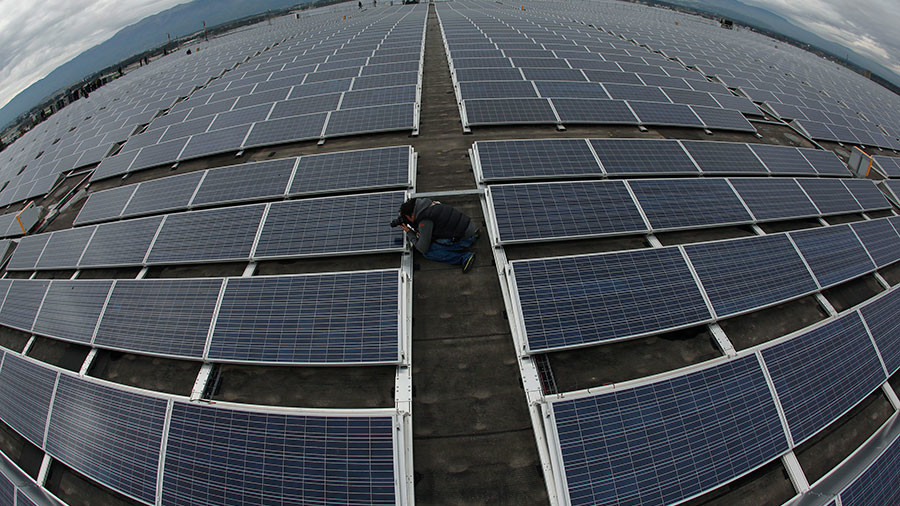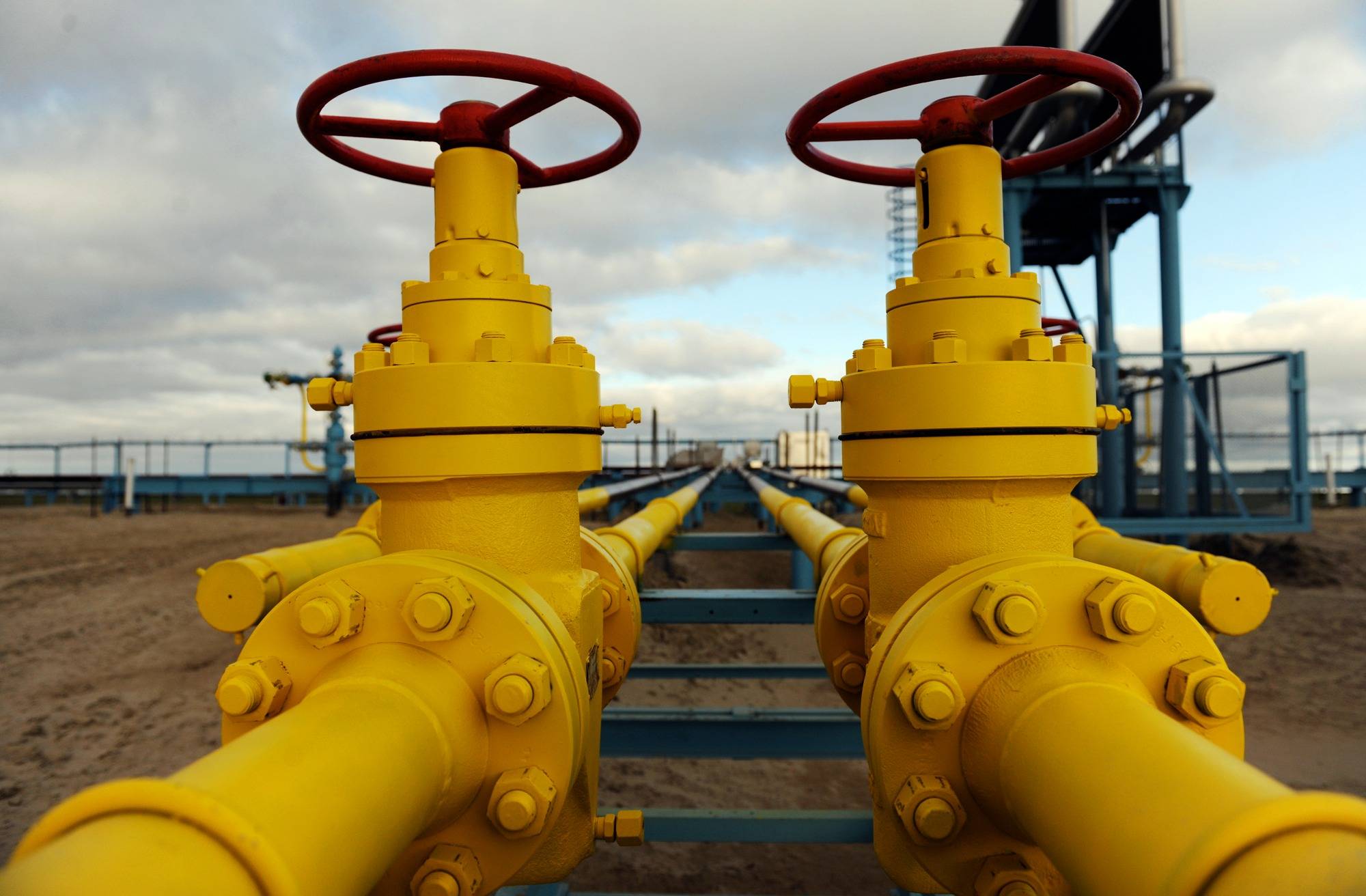Events
| Name | organizer | Where |
|---|---|---|
| MBCC “Doing Business with Mongolia seminar and Christmas Receptiom” Dec 10. 2025 London UK | MBCCI | London UK Goodman LLC |
NEWS

Nationwide livestock census starts in Mongolia www.news.mn
The annual nationwide livestock census has started in Mongolia. This not only records the number of animals, but also conducts a detailed study of the herder families across the country.
This time last year, there were 66.5 million animals, representing an increase of 241.2 thousand heads compared to 2017.
In 1970s, there were around 13.3 million sheep and 4.2 million goats. The number of goats in Mongolia has shot up grew from 19.8 percent of total livestock in 1990 to 40.8 percent today – this is due to growing global cashmere demands.

President’s ban on social insurance fund passes MPP causus www.zgm.mn
According to the MMP announcement on Monday, the President’s partial ban on the law on social insurance funds will be accepted. President of Mongolia Battulga Khaltmaa on Tuesday issued a partial sanction on the 2020 budget law, namely on the expected increase of the social contribution rate. However, other bans including Future Heritage fund and Advocacy Law can not be approved. As stated in the Law on the Parliamentary Procedure, if the President has made a partial ban, the decision will be partially accepted by the Parliament, said the Chairman of the MPP, Togtokhsuren Dulamdorj. The President stated, “As of September, there are about 19,000 companies that are registered on social insurance companies with a social contribution debt of MNT 176 billion. Therefore, if the social contribution rate rises from 2020, those companies’ debt will further grow. It will pose a risk of growing Social Insurance Fund deficit, decreasing the possibility of increasing the wages.” The pension system in Mongolia provides the benefits of a distribution or insurance premium to pension costs. Experts warn that in the future, longer-term retirement benefits and the need for proper and risk-free management of funds should be implemented regarding the increasing number of retirees. According to the updated population estimation, the population of Mongolia is expected to reach four million by 2030 and five million by 2045. Although fertility is steadily growing, the number of aging people is growing rapidly as well. Thus, the number of senior citizens in the total population is likely to reach 12.9 percent in 2030 and 16.3 percent in 2045, which is expected to double from current levels.“Fiscal revenues have overperformed since the start of the IMF‐supported program, but Mongolia’s pension system remains vulnerable. Without increases in the contribution rate, the deficit in the pension system is projected to rise from 2 percent of GDP in 2016 to 6 percent in 2030 and 11 percent in
2050 according to an analysis by the World Bank. This rising deficit primarily reflects an aging population and policy changes enacted in 2012 and 2017 adversely impacted the pension system design and incentives,” said Mr. Yoon Seok Hyun, the IMF Resident Representative in Mongolia.

Aspire Mining signs non-binding MoU with Sinosteel MEC www.zgm.mn
Aspire Mining Ltd., listed on the Australian Stock Exchange (ASX), has secured a non-binding agreement with Sinosteel Equipment and Engineering for the early development of Ovoot Coking Coal Project in Mongolia. The agreement covers potential engineering, procurement, construction (EPC) and trade-based funding opportunities for the Ovoot project. The announcement was followed by a USD 33.5 million placement with major shareholder Mr. Tserenpuntsag Tsedevdamba, who now owns 51 percent of the company. He has provided commitments to Aspire of loan guarantees of up to USD 100 million to complete ODEP’s construction and development. Sinosteel MECC is a subsidiary of the CNY 5.7 billion market cap Sinosteel Jilin Carbon Co. Ltd. Aspire’s financial gain is further enabled by Sinosteel’s most recently announced non-binding agreement, which covers potential engineering, procurement, construction and trade-based funding opportunities for the Ovoot Early Development Project (OEDP). Sinosteel and Aspire are entering into further discussions regarding the construction of a coal handling and preparation plant anticipating a cost of USD 37 million. Aspire is completing a definitive feasibility study, which is expected to be finalized around May 2020. “Aspire recognizes the importance of having a strong partnership with companies like Sinosteel MECC that play such a major role in the Chinese steel industry, the main market for Ovoot’s high-quality coking coal product,” David Paull, Executive Chairman of Aspire said. “We look forward to working alongside Sinosteel as one of our key partners in bringing the Ovoot Early Development Project into production and delivering value for all shareholders,” he added.
...
Mongolia signs MOU for the application of Cuban product Biorat www.cubanews.acn.cu
HAVANA, Dec 9 (ACN) The Mongolian Minister of Agriculture, Food and Light Industry, Mr. Ulaan Chultern, visited the Cuban Biorat factory of LABIOFAM S.A. Business Group, in Cantho province, Vietnam, where he signed a MOU.
The Cuban and Vietnamese specialists working in this industry explained to the Mongolian minister the production processes of BIORAT, as well as the benefits of the product and its effectiveness in rodent control, besides knowing the details of the business opportunities portfolio, productions and exportable services of the prestigious Cuban company.
The MOU signed by Mongolia indicates the interest of starting the extensive use of the product in that country, severely affected by rodent plagues in most of its areas of crops and livestock grazing.
Mr. D. Tumendemberel, director general of the plant protection institute, and Mr. Dorj Erdene-Ochir, first secretary of the Mongolian embassy to Vietnam, also participated on the Mongolian side.
Dr. Madyurys Tellez Sanchez, regional director of LABIOFAM S.A.; Mrs. Indira Lopez Arguelles, consul general of Cuba to Ho Chi Minh city; among other directors and experts of the factory were present on the Cuban side.

Emergency Management Agency working to open Asgat silver deposit www.montsame.mn
Ulaanbaatar /MONTSAME/. In the past two months, officers of the Bayan-Ulgii aimag regional emergency management service and mining rescue unit of the National Emergency Management Agency of Mongolia (NEMA) have been working at the Asgat silver deposit in the northwestern part of Mongolia with the purpose of opening the deposit for further development and preparation of 20-ton technological sampling to send to international laboratories.
The Asgat silver deposit is located in Nogoon nuur soum, Bayan-Ulgii aimag, bordering the Republic of Altai and the Republic of Tuva of Russia. It has been closed down for 29 years since 1991 when it was last underwent geological exploration and mapping.
According to the Emergency Management Agency, the emergency management officers are working in a cold temperature of -20C to -30C degrees at an altitude of 2780 meters above sea level to remove the area from the snow and ice covers collected over many years and restore the engineering and safety harnesses.
Works launched in November 2019 following the government’s earlier decision to put the Asgat deposit, included in the list of strategically important deposits of Mongolia, into economic circulation. On January 16 of this year, the Government decided to transfer the Asgat silver deposit from ‘Mongolrostsvetmet’ company to the ownership of Erdenes Mongolia LLC, which was charged to start the mining development at the Asgat deposit and settle the issue of investment funding for development.
As reported by the NEMA, emergency management and response personnel of Mongolia managed to save lives of 1658 people and properties worth MNT 59.1 billion after working in a total of 4681 emergency disaster situations nationwide this year.

Memorandum signed for joint establishment of solar power station with ROK www.montsame.mn
Orkhon /MONTSAME/. A Memorandum of Cooperation between Orkhon aimag and Mine Reclamation Corp. (MIRECO) of the Republic of Korea has been established with signing the document by Deputy Governor of Orkhon aimag S.Batjargal and Head of the Representative Office of MERECO Yon Gyu Hun. With the memorandum, the first talks will be held on the establishment of the solar power station at the dump in Govil bagh.
The side of Republic of Korea will be responsible for developing the feasibility study of the project, and the construction work is to kick off once the Ministry of Energy gives permission. In 2020, a joint waste processing factory is planned to be established with a soft loan from the Government of Poland at the dump, during which the solar power station will serve as great support.

Copper price rally builds on all-time high China imports www.mining.com
The rally in the price of copper gained momentum on Monday after trade data showed Chinese imports of refined metal rebounding and concentrate shipments setting a fresh all-time high.
In afternoon trading in New York, copper for delivery in March continued to climb, hitting $2.7620 a pound ($6,070 a tonne), a 20-week high and up 5.2% over four straight sessions of gains.
China consumes half the world’s copper, and trade data released on Sunday showed the country’s imports of unwrought copper increased to the highest since September 2018. Shipment totalled 483,000 tonnes in November, nearly 6% higher than the same month last year.
For the first 11 months of 2019, imports of unwrought copper are still down 8.5% from a year earlier at 4.45 million tonnes. Last year China imported a record 5.3m tonnes of refined copper.
Copper stocks in warehouses in China have been declining since June and were at 245,500 tonnes at the end of last month, the lowest since at least June 2013, according to Refinitiv Eikon data.
Imports of copper concentrate continued to rise sharply, up 27% from a year ago to a new record of 2.16m tonnes last month. November cargoes boosted year-to-date volumes to 20.1 million tonnes, a gain of just over 10% compared to the first 11 months of 2018. Concentrate imports are already above the record set in 2018 of 19.7m tonnes.
China put in place a complete ban on certain types of scrap copper imports at the start of 2019 on top of a 25% tariff on imports from the United States, one of its main suppliers, instituted in August.
Smelter expansions have increased demand and competition for copper ore in China, with spot treatment and refining charges (TC/RCs) — paid to smelters to process copper concentrate into refined metal — falling sharply this year as a result.

China launches multi-billion-dollar oil & gas pipeline company www.rt.com
Beijing announced on Monday the establishment of a national oil and gas pipeline firm, which will combine most of the country’s energy infrastructure and will provide fair market access to investors.
According to consultancy group Wood Mackenzie, the new firm may be worth between $80 billion and $105 billion.
“The new company will separate [oil and gas] transportation, production and sales, and open [transportation] to third-party entities, which will benefit market competition,” Xinhua News Agency reported, citing an unidentified official.
It will merge the networks operated by China’s three state-owned giants – China National Petroleum Corporation (CNPC), Sinopec and CNOOC – under a single operator.
As of end-2018, CNPC owned 63 percent of China’s mainstream oil and gas pipelines, while Sinopec and CNOOC controlled 31 percent and six percent, respectively.
The company will be responsible for building and interconnecting oil and gas trunk pipelines, gas storage and peak shaving facilities, transporting crude oil, oil product and natural gas through the pipelines, as well as disclosing pipeline and storage capacity availability to third parties, and enabling them to apply for access.
According to Xinhua, the new entity is expected be overseen by the State-owned Assets Supervision and Administration Commission (SASAC), which will have a 40 percent share in the company. CNPC, Sinopec, and CNOOC will share the remaining ownership.
The new energy company, the formation of which has been under consideration since at least 2014, is part of President Xi Jinping’s drive to streamline industrial capacity among state-owned enterprises. It comes as part of China’s plans to double its pipeline infrastructure to over 240,000km by 2025.
Last week, Moscow and Beijing officially launched a mega pipeline called Power of Siberia (or the eastern route) to deliver Russian gas to China. It will then link up with China’s own network to deliver gas as far as the eastern seaboard and help satisfy the nation’s vast and growing energy needs. China is the world’s largest importer of oil and second-biggest buyer of natural gas.
For more stories on economy & finance visit RT's business section

Mongolia exports 40 thousand tons of meat www.news.mn
Mongolia has exported a total of 40 thousand tons of meat to China, Russia, Vietnam, Japan, Iran and Kazakhstan this year.
In recent years, meat export to Hong Kong, Iran and Vietnam have been growing. Some 80 percent of the total revenue from meat exports accounts for horse meat and supply of mutton, goat meat and beef showed significant increase.
Mongolia earned approximately MNT400 billion (about USD160 million) from meat export 2018.
Mongolians consume around 10-12 million head of livestock or 300-400 tons of meat per year; thus, the country is potential to put 9 million head of livestock into economic circulation and export over 180 thousand tons of meat, apart from the supply of entire domestic meat needs.

ADB approves second loan for decreasing UB’s air pollution www.news.mn
The Asian Development Bank (ADB) has approved a loan of USD 160 million to support the Mongolian government’s efforts to improve the air quality and health in Ulaanbaatar. According to the ADB, it is the second loan to support improved policies, regulatory and institutional capacity, and actions to tackle air pollution in Ulaanbaatar.
Mongolia’s capital Ulaanbaatar is one of the most air-polluted cities of the world; half of the population live in the city’s ger districts, with no running water, central heating or sewage systems. Ger residents use stoves and have traditionally burned raw coal and other flammable materials to cook and keep warm during the region’s six-month-long winter, a practice believed to be responsible for an estimated 80 per cent of the air pollution in the capital city.
The Mongolian government has been striving to improve air quality in Ulaanbaatar by taking various measures, including the banning of burning low-grade coal for domestic use.
- «
- 1
- 2
- 3
- 4
- 5
- 6
- 7
- 8
- 9
- 10
- 11
- 12
- 13
- 14
- 15
- 16
- 17
- 18
- 19
- 20
- 21
- 22
- 23
- 24
- 25
- 26
- 27
- 28
- 29
- 30
- 31
- 32
- 33
- 34
- 35
- 36
- 37
- 38
- 39
- 40
- 41
- 42
- 43
- 44
- 45
- 46
- 47
- 48
- 49
- 50
- 51
- 52
- 53
- 54
- 55
- 56
- 57
- 58
- 59
- 60
- 61
- 62
- 63
- 64
- 65
- 66
- 67
- 68
- 69
- 70
- 71
- 72
- 73
- 74
- 75
- 76
- 77
- 78
- 79
- 80
- 81
- 82
- 83
- 84
- 85
- 86
- 87
- 88
- 89
- 90
- 91
- 92
- 93
- 94
- 95
- 96
- 97
- 98
- 99
- 100
- 101
- 102
- 103
- 104
- 105
- 106
- 107
- 108
- 109
- 110
- 111
- 112
- 113
- 114
- 115
- 116
- 117
- 118
- 119
- 120
- 121
- 122
- 123
- 124
- 125
- 126
- 127
- 128
- 129
- 130
- 131
- 132
- 133
- 134
- 135
- 136
- 137
- 138
- 139
- 140
- 141
- 142
- 143
- 144
- 145
- 146
- 147
- 148
- 149
- 150
- 151
- 152
- 153
- 154
- 155
- 156
- 157
- 158
- 159
- 160
- 161
- 162
- 163
- 164
- 165
- 166
- 167
- 168
- 169
- 170
- 171
- 172
- 173
- 174
- 175
- 176
- 177
- 178
- 179
- 180
- 181
- 182
- 183
- 184
- 185
- 186
- 187
- 188
- 189
- 190
- 191
- 192
- 193
- 194
- 195
- 196
- 197
- 198
- 199
- 200
- 201
- 202
- 203
- 204
- 205
- 206
- 207
- 208
- 209
- 210
- 211
- 212
- 213
- 214
- 215
- 216
- 217
- 218
- 219
- 220
- 221
- 222
- 223
- 224
- 225
- 226
- 227
- 228
- 229
- 230
- 231
- 232
- 233
- 234
- 235
- 236
- 237
- 238
- 239
- 240
- 241
- 242
- 243
- 244
- 245
- 246
- 247
- 248
- 249
- 250
- 251
- 252
- 253
- 254
- 255
- 256
- 257
- 258
- 259
- 260
- 261
- 262
- 263
- 264
- 265
- 266
- 267
- 268
- 269
- 270
- 271
- 272
- 273
- 274
- 275
- 276
- 277
- 278
- 279
- 280
- 281
- 282
- 283
- 284
- 285
- 286
- 287
- 288
- 289
- 290
- 291
- 292
- 293
- 294
- 295
- 296
- 297
- 298
- 299
- 300
- 301
- 302
- 303
- 304
- 305
- 306
- 307
- 308
- 309
- 310
- 311
- 312
- 313
- 314
- 315
- 316
- 317
- 318
- 319
- 320
- 321
- 322
- 323
- 324
- 325
- 326
- 327
- 328
- 329
- 330
- 331
- 332
- 333
- 334
- 335
- 336
- 337
- 338
- 339
- 340
- 341
- 342
- 343
- 344
- 345
- 346
- 347
- 348
- 349
- 350
- 351
- 352
- 353
- 354
- 355
- 356
- 357
- 358
- 359
- 360
- 361
- 362
- 363
- 364
- 365
- 366
- 367
- 368
- 369
- 370
- 371
- 372
- 373
- 374
- 375
- 376
- 377
- 378
- 379
- 380
- 381
- 382
- 383
- 384
- 385
- 386
- 387
- 388
- 389
- 390
- 391
- 392
- 393
- 394
- 395
- 396
- 397
- 398
- 399
- 400
- 401
- 402
- 403
- 404
- 405
- 406
- 407
- 408
- 409
- 410
- 411
- 412
- 413
- 414
- 415
- 416
- 417
- 418
- 419
- 420
- 421
- 422
- 423
- 424
- 425
- 426
- 427
- 428
- 429
- 430
- 431
- 432
- 433
- 434
- 435
- 436
- 437
- 438
- 439
- 440
- 441
- 442
- 443
- 444
- 445
- 446
- 447
- 448
- 449
- 450
- 451
- 452
- 453
- 454
- 455
- 456
- 457
- 458
- 459
- 460
- 461
- 462
- 463
- 464
- 465
- 466
- 467
- 468
- 469
- 470
- 471
- 472
- 473
- 474
- 475
- 476
- 477
- 478
- 479
- 480
- 481
- 482
- 483
- 484
- 485
- 486
- 487
- 488
- 489
- 490
- 491
- 492
- 493
- 494
- 495
- 496
- 497
- 498
- 499
- 500
- 501
- 502
- 503
- 504
- 505
- 506
- 507
- 508
- 509
- 510
- 511
- 512
- 513
- 514
- 515
- 516
- 517
- 518
- 519
- 520
- 521
- 522
- 523
- 524
- 525
- 526
- 527
- 528
- 529
- 530
- 531
- 532
- 533
- 534
- 535
- 536
- 537
- 538
- 539
- 540
- 541
- 542
- 543
- 544
- 545
- 546
- 547
- 548
- 549
- 550
- 551
- 552
- 553
- 554
- 555
- 556
- 557
- 558
- 559
- 560
- 561
- 562
- 563
- 564
- 565
- 566
- 567
- 568
- 569
- 570
- 571
- 572
- 573
- 574
- 575
- 576
- 577
- 578
- 579
- 580
- 581
- 582
- 583
- 584
- 585
- 586
- 587
- 588
- 589
- 590
- 591
- 592
- 593
- 594
- 595
- 596
- 597
- 598
- 599
- 600
- 601
- 602
- 603
- 604
- 605
- 606
- 607
- 608
- 609
- 610
- 611
- 612
- 613
- 614
- 615
- 616
- 617
- 618
- 619
- 620
- 621
- 622
- 623
- 624
- 625
- 626
- 627
- 628
- 629
- 630
- 631
- 632
- 633
- 634
- 635
- 636
- 637
- 638
- 639
- 640
- 641
- 642
- 643
- 644
- 645
- 646
- 647
- 648
- 649
- 650
- 651
- 652
- 653
- 654
- 655
- 656
- 657
- 658
- 659
- 660
- 661
- 662
- 663
- 664
- 665
- 666
- 667
- 668
- 669
- 670
- 671
- 672
- 673
- 674
- 675
- 676
- 677
- 678
- 679
- 680
- 681
- 682
- 683
- 684
- 685
- 686
- 687
- 688
- 689
- 690
- 691
- 692
- 693
- 694
- 695
- 696
- 697
- 698
- 699
- 700
- 701
- 702
- 703
- 704
- 705
- 706
- 707
- 708
- 709
- 710
- 711
- 712
- 713
- 714
- 715
- 716
- 717
- 718
- 719
- 720
- 721
- 722
- 723
- 724
- 725
- 726
- 727
- 728
- 729
- 730
- 731
- 732
- 733
- 734
- 735
- 736
- 737
- 738
- 739
- 740
- 741
- 742
- 743
- 744
- 745
- 746
- 747
- 748
- 749
- 750
- 751
- 752
- 753
- 754
- 755
- 756
- 757
- 758
- 759
- 760
- 761
- 762
- 763
- 764
- 765
- 766
- 767
- 768
- 769
- 770
- 771
- 772
- 773
- 774
- 775
- 776
- 777
- 778
- 779
- 780
- 781
- 782
- 783
- 784
- 785
- 786
- 787
- 788
- 789
- 790
- 791
- 792
- 793
- 794
- 795
- 796
- 797
- 798
- 799
- 800
- 801
- 802
- 803
- 804
- 805
- 806
- 807
- 808
- 809
- 810
- 811
- 812
- 813
- 814
- 815
- 816
- 817
- 818
- 819
- 820
- 821
- 822
- 823
- 824
- 825
- 826
- 827
- 828
- 829
- 830
- 831
- 832
- 833
- 834
- 835
- 836
- 837
- 838
- 839
- 840
- 841
- 842
- 843
- 844
- 845
- 846
- 847
- 848
- 849
- 850
- 851
- 852
- 853
- 854
- 855
- 856
- 857
- 858
- 859
- 860
- 861
- 862
- 863
- 864
- 865
- 866
- 867
- 868
- 869
- 870
- 871
- 872
- 873
- 874
- 875
- 876
- 877
- 878
- 879
- 880
- 881
- 882
- 883
- 884
- 885
- 886
- 887
- 888
- 889
- 890
- 891
- 892
- 893
- 894
- 895
- 896
- 897
- 898
- 899
- 900
- 901
- 902
- 903
- 904
- 905
- 906
- 907
- 908
- 909
- 910
- 911
- 912
- 913
- 914
- 915
- 916
- 917
- 918
- 919
- 920
- 921
- 922
- 923
- 924
- 925
- 926
- 927
- 928
- 929
- 930
- 931
- 932
- 933
- 934
- 935
- 936
- 937
- 938
- 939
- 940
- 941
- 942
- 943
- 944
- 945
- 946
- 947
- 948
- 949
- 950
- 951
- 952
- 953
- 954
- 955
- 956
- 957
- 958
- 959
- 960
- 961
- 962
- 963
- 964
- 965
- 966
- 967
- 968
- 969
- 970
- 971
- 972
- 973
- 974
- 975
- 976
- 977
- 978
- 979
- 980
- 981
- 982
- 983
- 984
- 985
- 986
- 987
- 988
- 989
- 990
- 991
- 992
- 993
- 994
- 995
- 996
- 997
- 998
- 999
- 1000
- 1001
- 1002
- 1003
- 1004
- 1005
- 1006
- 1007
- 1008
- 1009
- 1010
- 1011
- 1012
- 1013
- 1014
- 1015
- 1016
- 1017
- 1018
- 1019
- 1020
- 1021
- 1022
- 1023
- 1024
- 1025
- 1026
- 1027
- 1028
- 1029
- 1030
- 1031
- 1032
- 1033
- 1034
- 1035
- 1036
- 1037
- 1038
- 1039
- 1040
- 1041
- 1042
- 1043
- 1044
- 1045
- 1046
- 1047
- 1048
- 1049
- 1050
- 1051
- 1052
- 1053
- 1054
- 1055
- 1056
- 1057
- 1058
- 1059
- 1060
- 1061
- 1062
- 1063
- 1064
- 1065
- 1066
- 1067
- 1068
- 1069
- 1070
- 1071
- 1072
- 1073
- 1074
- 1075
- 1076
- 1077
- 1078
- 1079
- 1080
- 1081
- 1082
- 1083
- 1084
- 1085
- 1086
- 1087
- 1088
- 1089
- 1090
- 1091
- 1092
- 1093
- 1094
- 1095
- 1096
- 1097
- 1098
- 1099
- 1100
- 1101
- 1102
- 1103
- 1104
- 1105
- 1106
- 1107
- 1108
- 1109
- 1110
- 1111
- 1112
- 1113
- 1114
- 1115
- 1116
- 1117
- 1118
- 1119
- 1120
- 1121
- 1122
- 1123
- 1124
- 1125
- 1126
- 1127
- 1128
- 1129
- 1130
- 1131
- 1132
- 1133
- 1134
- 1135
- 1136
- 1137
- 1138
- 1139
- 1140
- 1141
- 1142
- 1143
- 1144
- 1145
- 1146
- 1147
- 1148
- 1149
- 1150
- 1151
- 1152
- 1153
- 1154
- 1155
- 1156
- 1157
- 1158
- 1159
- 1160
- 1161
- 1162
- 1163
- 1164
- 1165
- 1166
- 1167
- 1168
- 1169
- 1170
- 1171
- 1172
- 1173
- 1174
- 1175
- 1176
- 1177
- 1178
- 1179
- 1180
- 1181
- 1182
- 1183
- 1184
- 1185
- 1186
- 1187
- 1188
- 1189
- 1190
- 1191
- 1192
- 1193
- 1194
- 1195
- 1196
- 1197
- 1198
- 1199
- 1200
- 1201
- 1202
- 1203
- 1204
- 1205
- 1206
- 1207
- 1208
- 1209
- 1210
- 1211
- 1212
- 1213
- 1214
- 1215
- 1216
- 1217
- 1218
- 1219
- 1220
- 1221
- 1222
- 1223
- 1224
- 1225
- 1226
- 1227
- 1228
- 1229
- 1230
- 1231
- 1232
- 1233
- 1234
- 1235
- 1236
- 1237
- 1238
- 1239
- 1240
- 1241
- 1242
- 1243
- 1244
- 1245
- 1246
- 1247
- 1248
- 1249
- 1250
- 1251
- 1252
- 1253
- 1254
- 1255
- 1256
- 1257
- 1258
- 1259
- 1260
- 1261
- 1262
- 1263
- 1264
- 1265
- 1266
- 1267
- 1268
- 1269
- 1270
- 1271
- 1272
- 1273
- 1274
- 1275
- 1276
- 1277
- 1278
- 1279
- 1280
- 1281
- 1282
- 1283
- 1284
- 1285
- 1286
- 1287
- 1288
- 1289
- 1290
- 1291
- 1292
- 1293
- 1294
- 1295
- 1296
- 1297
- 1298
- 1299
- 1300
- 1301
- 1302
- 1303
- 1304
- 1305
- 1306
- 1307
- 1308
- 1309
- 1310
- 1311
- 1312
- 1313
- 1314
- 1315
- 1316
- 1317
- 1318
- 1319
- 1320
- 1321
- 1322
- 1323
- 1324
- 1325
- 1326
- 1327
- 1328
- 1329
- 1330
- 1331
- 1332
- 1333
- 1334
- 1335
- 1336
- 1337
- 1338
- 1339
- 1340
- 1341
- 1342
- 1343
- 1344
- 1345
- 1346
- 1347
- 1348
- 1349
- 1350
- 1351
- 1352
- 1353
- 1354
- 1355
- 1356
- 1357
- 1358
- 1359
- 1360
- 1361
- 1362
- 1363
- 1364
- 1365
- 1366
- 1367
- 1368
- 1369
- 1370
- 1371
- 1372
- 1373
- 1374
- 1375
- 1376
- 1377
- 1378
- 1379
- 1380
- 1381
- 1382
- 1383
- 1384
- 1385
- 1386
- 1387
- 1388
- 1389
- 1390
- 1391
- 1392
- 1393
- 1394
- 1395
- 1396
- 1397
- 1398
- 1399
- 1400
- 1401
- 1402
- 1403
- 1404
- 1405
- 1406
- 1407
- 1408
- 1409
- 1410
- 1411
- 1412
- 1413
- 1414
- 1415
- 1416
- 1417
- 1418
- 1419
- 1420
- 1421
- 1422
- 1423
- 1424
- 1425
- 1426
- 1427
- 1428
- 1429
- 1430
- 1431
- 1432
- 1433
- 1434
- 1435
- 1436
- 1437
- 1438
- 1439
- 1440
- 1441
- 1442
- 1443
- 1444
- 1445
- 1446
- 1447
- 1448
- 1449
- 1450
- 1451
- 1452
- 1453
- 1454
- 1455
- 1456
- 1457
- 1458
- 1459
- 1460
- 1461
- 1462
- 1463
- 1464
- 1465
- 1466
- 1467
- 1468
- 1469
- 1470
- 1471
- 1472
- 1473
- 1474
- 1475
- 1476
- 1477
- 1478
- 1479
- 1480
- 1481
- 1482
- 1483
- 1484
- 1485
- 1486
- 1487
- 1488
- 1489
- 1490
- 1491
- 1492
- 1493
- 1494
- 1495
- 1496
- 1497
- 1498
- 1499
- 1500
- 1501
- 1502
- 1503
- 1504
- 1505
- 1506
- 1507
- 1508
- 1509
- 1510
- 1511
- 1512
- 1513
- 1514
- 1515
- 1516
- 1517
- 1518
- 1519
- 1520
- 1521
- 1522
- 1523
- 1524
- 1525
- 1526
- 1527
- 1528
- 1529
- 1530
- 1531
- 1532
- 1533
- 1534
- 1535
- 1536
- 1537
- 1538
- 1539
- 1540
- 1541
- 1542
- 1543
- 1544
- 1545
- 1546
- 1547
- 1548
- 1549
- 1550
- 1551
- 1552
- 1553
- 1554
- 1555
- 1556
- 1557
- 1558
- 1559
- 1560
- 1561
- 1562
- 1563
- 1564
- 1565
- 1566
- 1567
- 1568
- 1569
- 1570
- 1571
- 1572
- 1573
- 1574
- 1575
- 1576
- 1577
- 1578
- 1579
- 1580
- 1581
- 1582
- 1583
- 1584
- 1585
- 1586
- 1587
- 1588
- 1589
- 1590
- 1591
- 1592
- 1593
- 1594
- 1595
- 1596
- 1597
- 1598
- 1599
- 1600
- 1601
- 1602
- 1603
- 1604
- 1605
- 1606
- 1607
- 1608
- 1609
- 1610
- 1611
- 1612
- 1613
- 1614
- 1615
- 1616
- 1617
- 1618
- 1619
- 1620
- 1621
- 1622
- 1623
- 1624
- 1625
- 1626
- 1627
- 1628
- 1629
- 1630
- 1631
- 1632
- 1633
- 1634
- 1635
- 1636
- 1637
- 1638
- 1639
- 1640
- 1641
- 1642
- 1643
- 1644
- 1645
- 1646
- 1647
- 1648
- 1649
- 1650
- 1651
- 1652
- 1653
- 1654
- 1655
- 1656
- 1657
- 1658
- 1659
- 1660
- 1661
- 1662
- 1663
- 1664
- 1665
- 1666
- 1667
- 1668
- 1669
- 1670
- 1671
- 1672
- 1673
- 1674
- 1675
- 1676
- 1677
- 1678
- 1679
- 1680
- 1681
- 1682
- 1683
- 1684
- 1685
- 1686
- 1687
- 1688
- 1689
- 1690
- 1691
- 1692
- 1693
- 1694
- »






